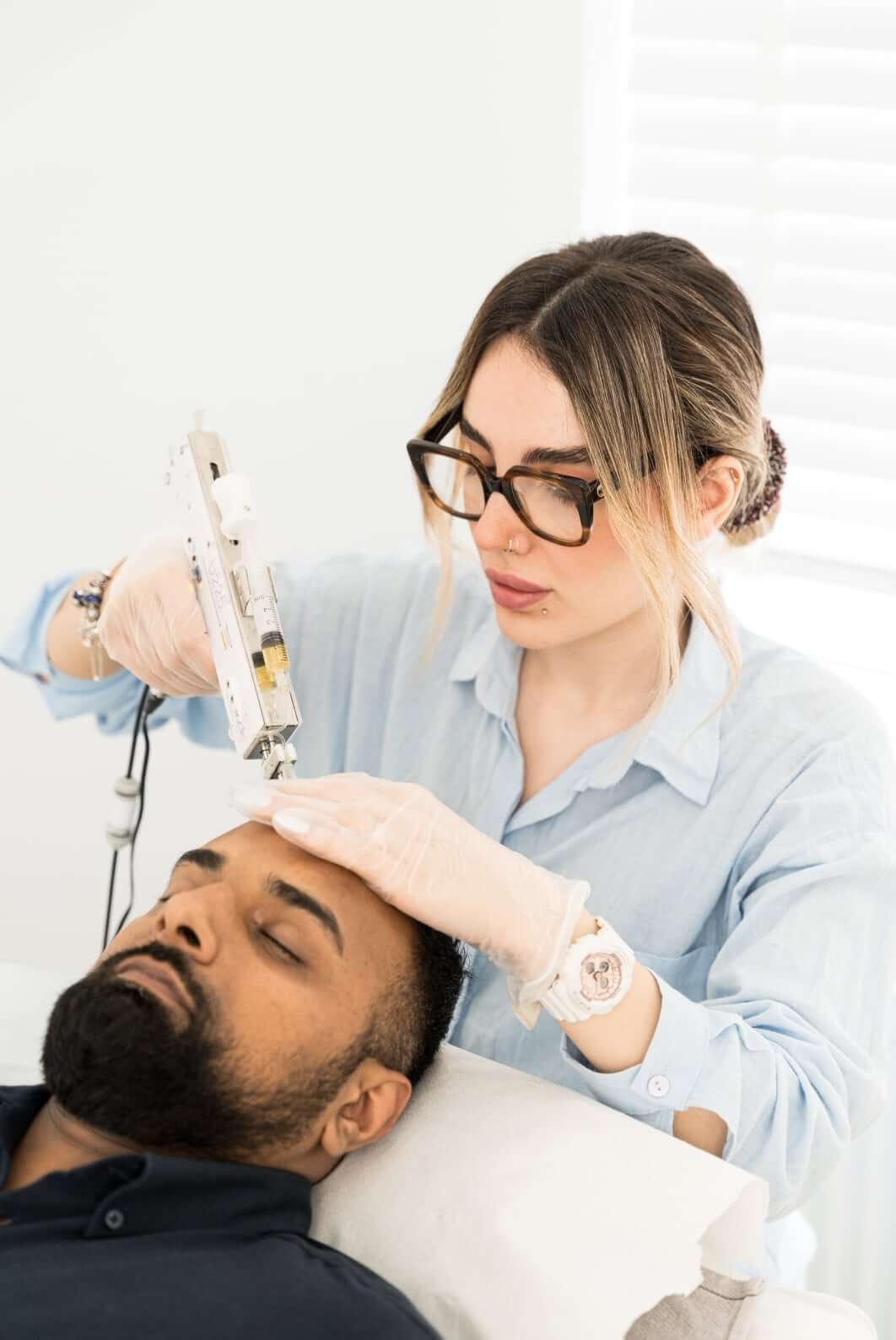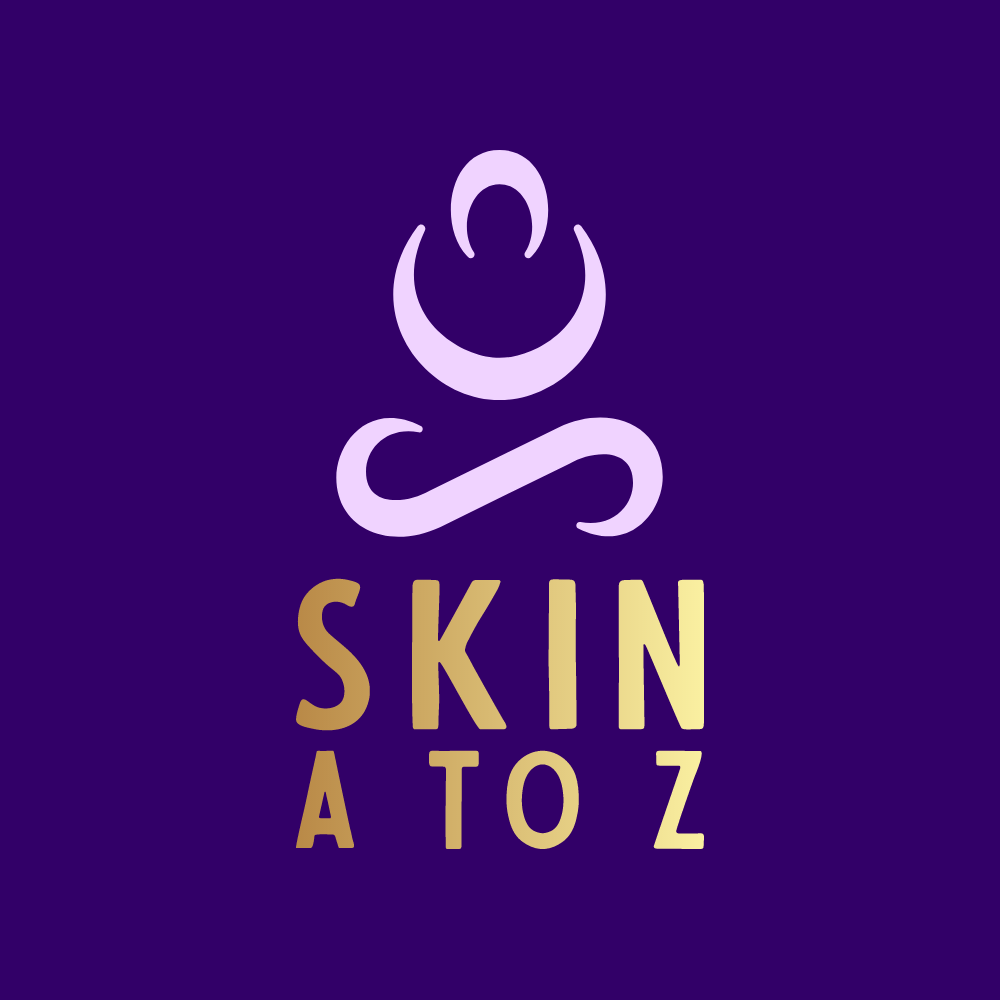Hair Loss

PRP Hair Treatment

PRP therapy is an effective treatment for thinning hair, menopause hair loss, Post-hair transplant stimulation, Alopecia, with many patients seeing significant improvements in their condition after receiving the treatment.
PRP therapy works by injecting the patient's own concentrated platelet-rich plasma into the hair follicles, which stimulates and reactivates dormant or weakened hair follicles to produce thicker and healthier hair.
The process begins with a simple blood draw from the patient's arm; this is then placed in a centrifuge machine which separates the red blood cells from the plasma. The PRP is then injected into the scalp using a very fine needle, allowing the platelets to be delivered directly and efficiently to where they are needed.
Thanks to this process, hair follicles are nourished and stimulated in the scalp, resulting in an increase in blood flow to the area. PRP hair treatment typically requires a series of 2-3 treatments spaced 4-6 weeks apart, and results may vary from patient to patient, but all will be discussed during your initial hair loss consultation.
Menopause Hair Loss
PRP therapy has been shown to be a highly effective hair loss treatment for those suffering from menopause-related hair loss. The procedure helps to stimulate the scalp and repair damage caused by hormones, providing thicker, fuller hair.
Post-Hair Transplant Stimulation
After getting a hair transplant we use PRP injections to stimulate the newly transplanted hair follicles. This helps to shorten the healing time and increase the rate of successful grafts.
Male/Female Pattern Baldness
Platelet-rich-plasma therapy is an effective treatment for both female and male pattern baldness, as it helps to stimulate and repair damaged hair follicles. We will need to assess the stage of pattern baldness you are at before we can decide on the best treatment plan for you.
Alopecia
At Skin A to Z we have treated a number of alopecia sufferers with PRP therapy and have seen significant improvements in the thickness and growth of hair. This proves hair PRP treatment to be incredibly effective in reversing the effects of alopecia.
Thinning Hair
PRP therapy is an effective treatment for thinning hair, menopause hair loss, Post-hair transplant stimulation, Alopecia, with many patients seeing significant improvements in their condition after receiving the treatment. PRP is a better option if you have thinning hair rather than going for an invasive hair transplant surgery.
PRP therapy is a reliable hair loss treatment that can rejuvenate thinning hair for both men and women. This is because PRP contains proteins that help your blood clot and encourage cell growth, both of which are essential functions in hair regrowth. When administered by an expert clinician, PRP hair treatment can be used to prevent hair loss and promote the growth of new hair, transforming your look and giving you greater confidence.
Although PRP as a treatment for hair loss is fairly modern, multiple studies have shown encouraging results. These have primarily focused on treating androgenetic alopecia (AGA) — also known as hormone-related baldness — which is a condition that can affect both men and women. You may also hear AGA being referred to as male pattern baldness or female pattern baldness.
Below is an overview of some promising results from PRP and hair loss studies:
A 2014 study published in the Journal of Cutaneous and Aesthetic Surgery, found that injecting two to three cubic centimetres of PRP into the scalp every two weeks for three months could increase the average number of hair follicles from 71 to 93 units — an average mean gain of 22.09 follicular units per cm². Although this study is too small to be conclusive (11 patients were involved), results showed that PRP injections may increase the number of hair follicles and that patients were delighted with the treatment.
In a 2015 study published in the Asian Journal of Transfusion Science, 10 people were given PRP injections every two to three weeks for three months. By the end of the three months, all 10 patients had good hair growth, with more hairs, increased hair thickness and improved hair root strength.
Another 2015 study, featured in Stem Cells Translational Medicine, reported the effectiveness of PRP on male pattern hair loss, with a randomised placebo-controlled trial conducted over two years. Twenty-three male patients enrolled in the study. Results showed a significant increase in the number of hairs in those patients injected with PRP, with the study concluding that PRP has a positive effect on male pattern hair loss without significant side effects.
A 2019 study that appeared in the International Journal of Trichology compared the effectiveness of PRP injections and minoxidil (Rogaine) with two groups of 20 people using each type of hair loss treatment. Thirty patients completed the study, with results indicating that PRP therapy performed much better of the two treatments. However, the study also found that your level of platelets impacts how well your plasma works as a hair loss treatment, indicating that those with a lower level of platelets in their blood may not find this treatment quite as effective.
One of the main benefits of platelet-rich plasma hair treatment is that the solution used is made up of your blood cells and plasma. Unlike with other treatments, this means there’s no risk of allergy or reaction. PRP also has the benefit of minimal side effects, which is a concern with other types of hair loss treatment for many people. Medication for male pattern baldness could increase the risk of erectile dysfunction. At the same time, for women, alternative treatments such as minoxidil can cause potential side effects such as facial hair growth and low blood pressure.
PRP hair treatment is a minimally invasive and low-risk treatment requiring no pharmaceutical products or downtime, making it the preferred choice for many people experiencing hair loss.
Most patients will require a first round of treatments involving at least two to three sessions, usually four to six weeks apart. Results are typically visible within a few weeks and will appear as a natural yet noticeable change. Optimal collagen regeneration can take up to three months. Results vary between patients but can last for as long as 18 months, after which you’ll need a touch-up appointment to maintain new hair regrowth.







